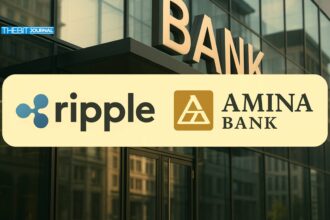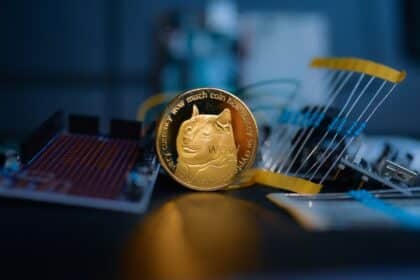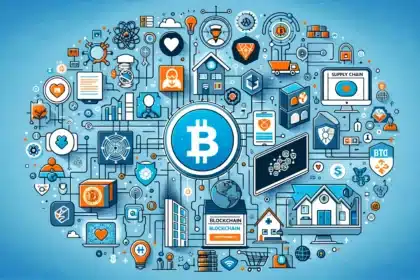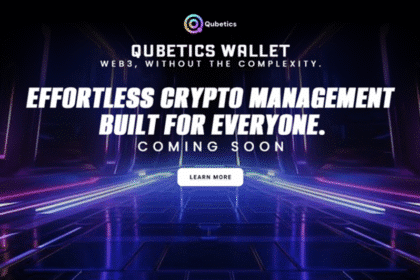Blockchain technology has gone beyond cryptocurrency buzz. By 2024, it’s transforming industries, fixing inefficiencies, and changing lives. From healthcare to finance, businesses are using blockchain to build trust, transparency, and speed. But what does that mean for you and me?
Let’s break it down. Imagine tracking a mango from the farm to your fridge in seconds. Or, picture sending money across the world in minutes, with no bank delays or fees. That’s blockchain for you—solving real-life problems in ways we couldn’t imagine before.
In this article, I’ll walk you through the top 10 real-world applications of blockchain technology in 2024. Expect simple explanations, relatable examples, and a clear understanding of how this tech is changing the game.
1. Supply Chain Management: Tracking Products from Farm to Table
Supply chains are notoriously complex and messy. A product often travels thousands of miles and passes through numerous hands—from farms to factories, warehouses, distributors, and finally, to store shelves. Along this journey, errors, delays, fraud, and even counterfeiting can occur, making it difficult to ensure transparency, accountability, and efficiency.
Blockchain technology is transforming supply chain management by providing an unchangeable, decentralised ledger that records every step of a product’s journey. This ensures that every participant—from suppliers to end consumers—has access to a clear, accurate, and tamper-proof record of where products come from and where they’ve been.

With blockchain, every movement and transaction within the supply chain is securely recorded in real-time. Each step—whether it’s production, transportation, or delivery—is logged on the blockchain, creating a transparent and verifiable audit trail. The decentralised nature of blockchain means that no single entity can manipulate the data, ensuring a higher level of trust and reliability.
To illustrate, consider your morning coffee. Many consumers today want to know if their coffee is truly fair trade, organic, and sustainably sourced. Using blockchain technology, coffee companies can document the entire lifecycle of the coffee beans. From the time the beans are picked at the farm, to when they are processed, shipped, roasted, and finally packaged, every step is recorded on the blockchain. As a consumer, you can scan a QR code on the coffee bag to trace its journey—verifying its authenticity and ensuring it aligns with your values.
Now let’s take this a step further and look at large-scale supply chain operations. Take Walmart, for instance, which uses blockchain technology to track lettuce from farm to shelf. In the event of a food safety issue, such as E. coli contamination, Walmart can pinpoint the exact source of the problem within seconds. Instead of issuing blanket recalls for thousands of products—a process that is both costly and inefficient—they can target only the affected batches. This capability not only saves money but also helps prevent widespread health risks, ultimately saving lives.
Major players in supply chain innovation, such as IBM Food Trust and Nestlé, are already harnessing blockchain technology to improve transparency and streamline operations. Beyond the food industry, blockchain is being adopted in sectors such as fashion, pharmaceuticals, and electronics. In fashion, for instance, blockchain technology helps combat counterfeiting by verifying the origin of each item and ensuring it’s genuine. In the electronics industry, it ensures ethical sourcing of components like minerals and semiconductors.
The true value of blockchain lies in its ability to make supply chains completely transparent. Producers can showcase their adherence to quality and ethical standards while consumers gain the confidence of knowing exactly what they are buying. By bridging this trust gap, blockchain technology strengthens relationships between businesses and consumers and sets a new standard for accountability and efficiency in supply chain management.
2. Cross-Border Payments: Sending Money Without Borders
Sending money internationally has long been an expensive, slow, and complicated process. Traditional financial systems rely on a network of intermediaries—including banks, clearing houses, and currency exchange services—to transfer funds across borders. Each intermediary adds its own layer of fees, bureaucracy, and delays.

As a result, international transactions can take several days to complete, and a significant portion of the transferred amount is often lost to fees. For individuals and businesses that rely on frequent cross-border payments, these inefficiencies can be both frustrating and costly.
Blockchain technology offers a revolutionary solution to this problem by enabling instant, low-cost cross-border payments. Instead of relying on intermediaries, blockchain uses decentralised ledgers to facilitate peer-to-peer transfers of value. These transactions are recorded securely and transparently on the blockchain, ensuring trust and reliability without the need for middlemen. With blockchain, funds can be sent and received within minutes, regardless of geographical location, and transaction fees are reduced to mere pennies.
To understand the impact of blockchain, consider a real-world example: a construction worker living in London who needs to send money to his family in the Philippines. Using traditional banking services or remittance providers, this process could take several days to complete. During this time, the funds pass through multiple intermediaries, each charging fees that eat into the final amount received. By the time the money reaches his family, a significant percentage has been lost to transfer costs.
Blockchain-based payment platforms, such as Ripple and Stellar, change this dynamic entirely. These platforms enable the construction worker to send money directly to his family’s digital wallet in seconds, bypassing traditional intermediaries. The transaction costs just a fraction of what banks charge, allowing his family to receive more money, almost instantly. Such platforms are not only faster and cheaper but also provide a level of transparency that traditional systems cannot match, as every transaction is immutably recorded on the blockchain.
Major companies are already recognising the potential of blockchain for cross-border payments. Financial technology firms like Wise and Revolut have begun integrating blockchain solutions to improve transaction speed and reduce fees for their customers. Even global giants like Visa are exploring blockchain-based payment systems to enhance their international payment networks. These advancements are not just limited to individuals; businesses that operate globally also benefit from faster settlement times, reduced costs, and improved cash flow.
The transformative power of blockchain is particularly significant for regions with weak banking systems or limited access to financial services. In developing economies, where traditional banking infrastructure is often unreliable or inaccessible, blockchain offers a practical and affordable alternative. Individuals who were previously excluded from the financial system can now participate in global commerce, sending and receiving money with ease.
By eliminating intermediaries, blockchain technology makes cross-border payments faster, cheaper, and more accessible. It removes the inefficiencies of traditional banking systems and empowers individuals and businesses to transfer money seamlessly across borders. In a world that is increasingly interconnected, blockchain is reshaping the way we think about international payments, creating opportunities for financial inclusion and economic growth.
3. Healthcare: Securing Patient Records
The healthcare industry has long struggled with the secure and efficient sharing of patient information. Medical records are often stored in isolated silos across hospitals, clinics, and laboratories, making it challenging to share data seamlessly between healthcare providers. As a result, patients are frequently required to repeat tests, update their medical histories manually, and carry physical copies of documents to different appointments.
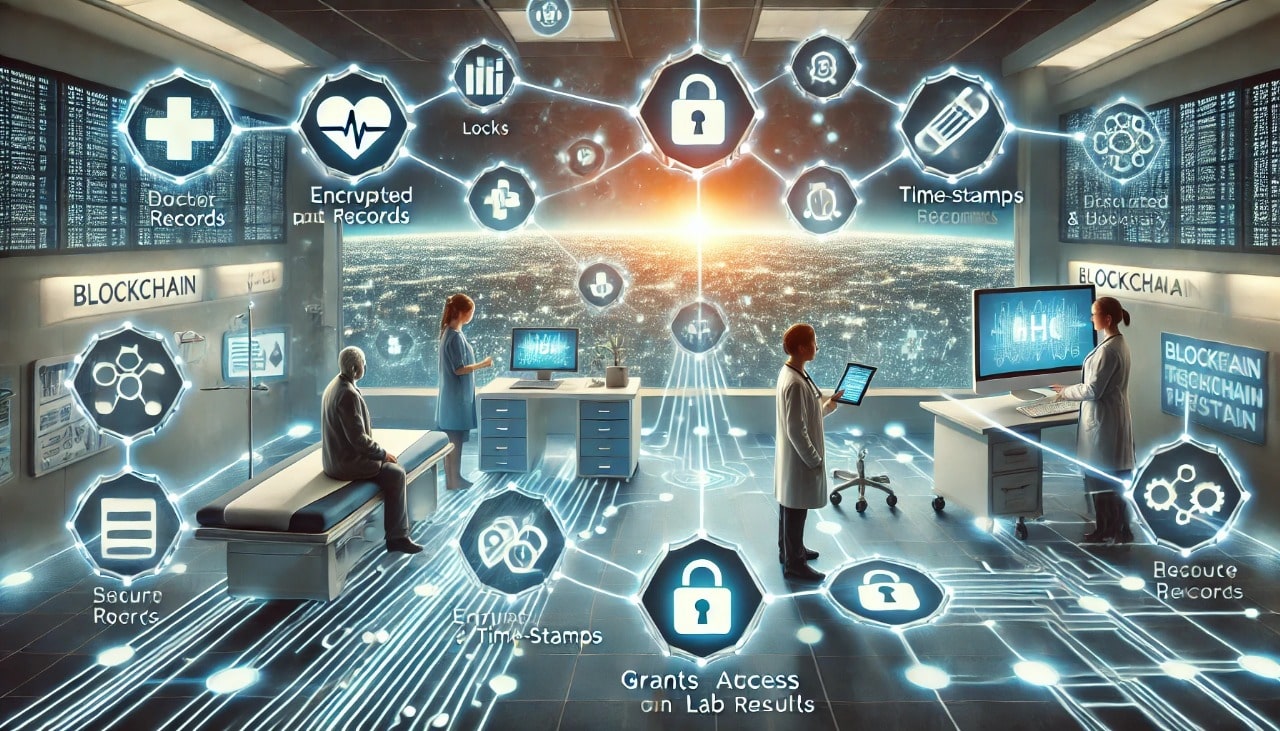
These inefficiencies not only waste time but also increase healthcare costs and the risk of medical errors. Worse yet, the sensitive nature of medical data makes it a prime target for hackers and tampering, jeopardising patient privacy and trust.
Blockchain technology offers a transformative solution to these challenges by providing a secure, decentralised, and immutable way to store medical records. Instead of relying on fragmented systems, patient information is stored on a blockchain ledger, which acts as a single source of truth. Each piece of data added to the blockchain is encrypted, time-stamped, and verified, ensuring its accuracy and preventing tampering.
Access to this data is granted only to authorised parties, such as doctors, hospitals, and insurance providers, with the patient maintaining control over who can view their records.
Imagine a patient visiting multiple specialists across different hospitals. Traditionally, this would involve carrying stacks of paperwork, waiting for records to be transferred manually, or undergoing redundant tests because previous data wasn’t available. With blockchain, the patient’s entire medical history—including lab results, prescriptions, and imaging—is stored securely on a decentralised ledger. Doctors can instantly access this data with the patient’s consent, ensuring they have the most accurate, up-to-date information. This leads to faster diagnoses, better treatment plans, and improved overall patient care.
Blockchain also enhances the security of medical records. Data breaches in healthcare are alarmingly common, with hackers exploiting vulnerabilities in outdated systems to steal sensitive information. By leveraging blockchain’s cryptographic protections, medical data becomes nearly impossible to alter or hack. This not only strengthens privacy but also builds trust between patients and healthcare providers, as individuals gain confidence that their personal information is protected.
Innovative companies like Guardtime and MedRec are already pioneering blockchain solutions in healthcare. Guardtime, for example, uses blockchain to secure medical records, ensuring data integrity and transparency. Meanwhile, MedRec focuses on giving patients control over their health information while enabling efficient data sharing between providers.
Blockchain technology also addresses insurance fraud, a significant issue in healthcare. By verifying the authenticity of medical claims and ensuring transparency across all parties, blockchain reduces fraudulent activity and saves costs for both insurers and patients.
The potential of blockchain in healthcare extends beyond just record-keeping. It streamlines administrative processes, reduces operational waste, and facilitates smoother coordination between healthcare providers. For patients, this means less paperwork, fewer delays, and better quality care. For healthcare systems, blockchain offers an opportunity to build more secure, efficient, and patient-centric operations.
By securely storing and sharing medical records, blockchain technology is revolutionising healthcare. It improves patient care, enhances data security, and reduces inefficiencies, paving the way for a more connected and trustworthy healthcare system.
4. Voting Systems: Transparent and Tamper-Proof Elections
Election fraud, ballot tampering, and growing mistrust in voting systems are problems that affect democracies worldwide. Traditional voting methods, whether paper-based or electronic, often lack transparency, leaving voters uncertain about whether their votes were counted correctly. Issues like lost ballots, delayed results, and tampering by bad actors have further fuelled public scepticism. Blockchain technology offers a revolutionary solution to these challenges by enabling transparent, secure, and verifiable elections that restore trust in the democratic process.

Blockchain-based voting systems work by recording each vote on a decentralised, unchangeable digital ledger. Once cast, a vote becomes a permanent record that cannot be altered or deleted. The blockchain ensures that each vote is both anonymous and verifiable—protecting voter privacy while allowing the system to confirm that the vote was legitimately cast and accurately counted.
For voters, this means they can track their individual vote to ensure it was included in the final tally. For election authorities, it provides a secure, transparent method for verifying results without the risk of fraud or tampering.
Countries like Estonia are already pioneers in implementing blockchain voting systems. Estonia’s advanced digital infrastructure allows citizens to cast votes securely online, saving time and reducing reliance on physical polling stations. Blockchain technology ensures that each vote is immutable and transparent, and voters can even verify that their vote was recorded correctly. This not only streamlines the voting process but also builds trust among citizens by providing verifiable proof of fair elections.
The impact of blockchain voting could be transformative on a global scale. In many parts of the world, particularly in countries where elections have been plagued by corruption, voter suppression, and fraud, blockchain offers a way to restore integrity to the electoral process. For instance, in regions where ballot boxes have been tampered with or votes have mysteriously disappeared, blockchain ensures every vote is securely recorded and accounted for. It also allows real-time vote counting, eliminating the delays and uncertainties often associated with manual vote tabulation.
Blockchain voting systems are particularly beneficial for increasing voter accessibility and participation. By enabling secure online voting, blockchain reduces the need for physical polling stations, which can be difficult to reach for rural or disabled voters. It also encourages participation from citizens living abroad, as they can vote remotely without concerns about delays or lost ballots. For younger, tech-savvy generations, blockchain voting aligns with their preference for digital, user-friendly solutions.
Moreover, blockchain voting reduces the administrative costs of elections. Traditional voting methods require significant resources to print ballots, set up polling stations, and hire election staff. Blockchain simplifies these processes, saving governments both time and money.
Blockchain-based voting systems have the potential to revolutionise elections by ensuring they are transparent, tamper-proof, and trustworthy. Countries like Estonia are already leading the way, demonstrating how blockchain can secure the electoral process and restore public confidence in democratic systems. By eliminating fraud, enhancing accessibility, and giving voters the ability to verify their votes, blockchain gives power back to the people—ensuring that every vote truly counts.
5. Real Estate: Speeding Up Property Transactions
The real estate industry has long been synonymous with slow, cumbersome, and paperwork-heavy processes. Buying or selling property often involves numerous intermediaries, including banks, legal firms, real estate agents, and government offices. These parties work to verify titles, check ownership histories, approve loans, and finalize contracts—a process that can take weeks, if not months. Along the way, mistakes, fraud, and disputes over ownership can arise, adding further delays and frustration for both buyers and sellers.
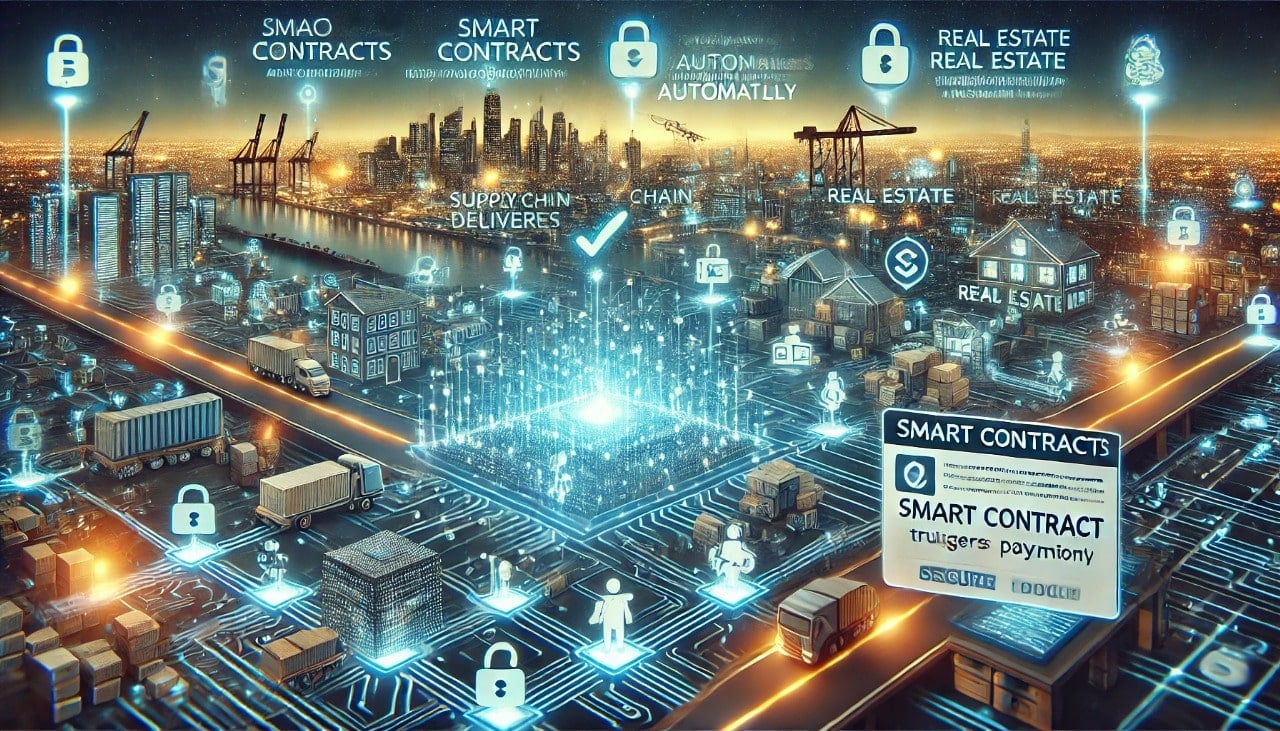
Blockchain technology is transforming real estate transactions by offering a faster, more secure, and transparent alternative. Property titles, ownership changes, and contracts can be recorded on a decentralised blockchain ledger, creating an unchangeable and easily verifiable record of all transactions. By removing the need for manual verification and paperwork, blockchain speeds up the entire process while significantly reducing the risk of fraud.
To understand how this works, imagine the process of buying a house. Traditionally, title checks, loan approvals, and ownership verification can take weeks due to the involvement of multiple intermediaries and outdated systems. With blockchain, every step of the transaction—from title history to contract signing—is recorded instantly on the decentralised ledger.
All parties, including the buyer, seller, lender, and legal authorities, can access the data in real time. This ensures complete transparency and eliminates the need for third-party verification. Fraud risks, such as forged titles or double-selling of properties, are virtually eliminated because blockchain records are tamper-proof.
Blockchain also introduces the concept of smart contracts, which further streamline property transactions. Smart contracts are self-executing agreements written in code and stored on the blockchain. They automatically trigger actions, such as transferring ownership or releasing funds, when predefined conditions are met. For example, once a buyer makes a payment, the smart contract can immediately update the ownership record on the blockchain, eliminating delays caused by manual processing.
Platforms like Propy are already demonstrating the potential of blockchain in real estate. Propy enables blockchain-based property sales by recording ownership transfers and contracts securely on the blockchain. Buyers and sellers can complete transactions online, reducing the time and costs associated with traditional real estate processes. Governments are also beginning to explore blockchain solutions for land registries. For instance, Sweden and the UAE are testing blockchain-based land registration systems to improve efficiency, security, and transparency.
The benefits of blockchain in real estate extend beyond individual property transactions. By creating immutable records of ownership and property histories, blockchain can help prevent disputes over land rights, particularly in regions where unclear ownership has historically caused conflicts. It also enhances trust in the market, making real estate transactions more accessible and appealing to international investors.
Blockchain is revolutionising the real estate market by speeding up property transactions, reducing fraud, and improving transparency. Platforms like Propy and forward-thinking governments are paving the way for blockchain adoption, showing how this technology can make buying and selling property faster, more secure, and far more efficient. As blockchain becomes a standard tool in real estate, paperwork-heavy processes will become a thing of the past, and property transactions will finally enter the digital age.
6. Identity Verification: Protecting Your Digital Identity
In today’s digital world, personal information such as passports, IDs, and credit card numbers is constantly at risk. Hackers are increasingly sophisticated, targeting centralised databases to steal sensitive data, while companies frequently misuse or mishandle personal information. Traditional identity verification systems rely on centralised servers that store large volumes of data in one place. This makes them an attractive target for cyberattacks, and a single breach can expose millions of users to identity theft, financial fraud, or other malicious activities.
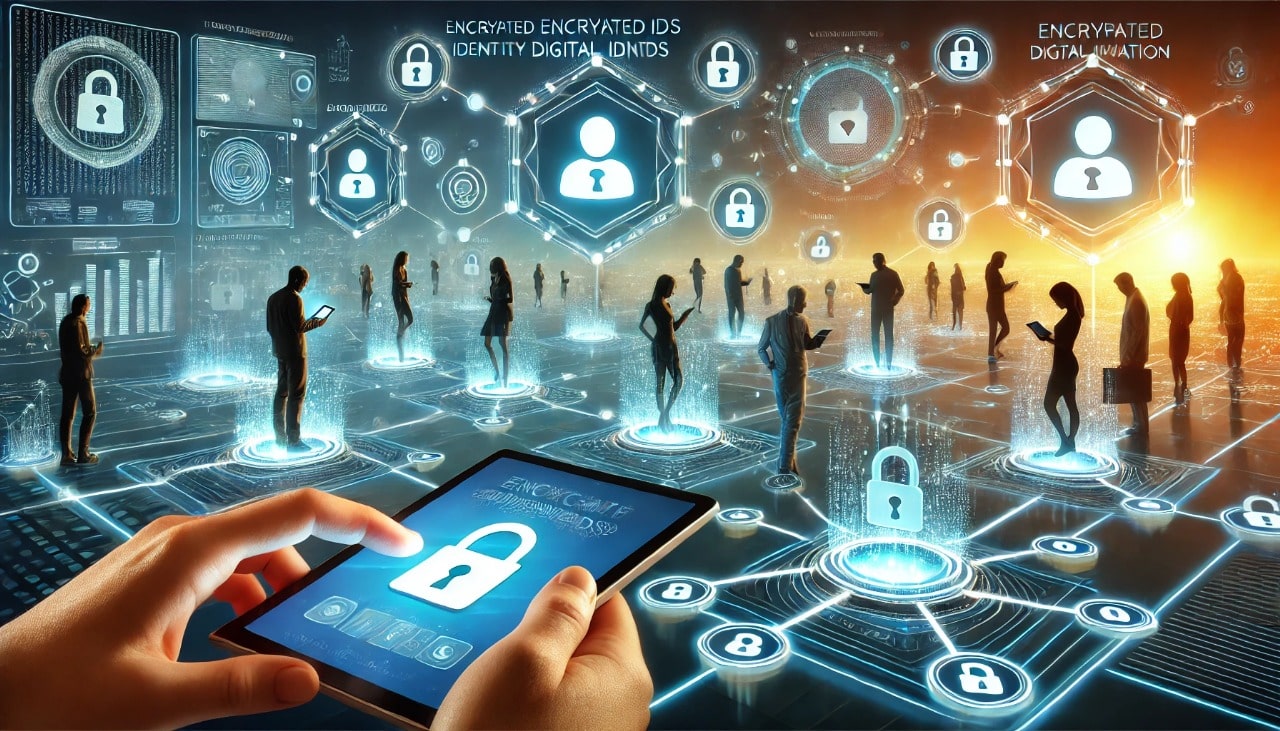
Blockchain technology provides a more secure and decentralised alternative for identity verification, empowering individuals to control their own digital identities. Instead of relying on a central authority, personal identity information is stored on a blockchain—a secure, immutable, and decentralised ledger. Users can grant access to their data only when necessary and to specific parties, ensuring greater privacy and security. Once shared, the information is tamper-proof and verifiable, eliminating the risk of alteration or hacking.
Consider a scenario where you are applying for a job. Traditionally, you would send scanned copies of your credentials—such as diplomas, certificates, or identification—to an employer. This process not only raises privacy concerns but also requires employers to spend time and resources verifying the authenticity of these documents, often through third-party services.
With blockchain-based identity verification, you can share a digital ID that has already been verified and recorded securely on the blockchain. Employers simply scan the blockchain-verified credentials to confirm your qualifications and work experience in seconds, streamlining the hiring process and removing the need for manual checks.
This level of security and control extends to other areas, such as financial services, healthcare, and online platforms. For example, when opening a bank account, customers can use blockchain-based identity systems to share verified proof of identity without submitting physical documents. Similarly, in healthcare, patients can grant temporary access to specific medical records, ensuring their privacy while enabling doctors to access necessary information quickly and efficiently.
Platforms like Civic and SelfKey are already leading the way in blockchain-based identity verification. Civic allows users to create a digital identity that can be securely shared with trusted parties, reducing the risk of data leaks or misuse. Meanwhile, SelfKey empowers users to manage their digital identity through a self-sovereign identity system, where individuals retain full ownership and control over their personal data.
One of the key advantages of blockchain for identity verification is its ability to eliminate reliance on centralised databases, which are prone to breaches and mismanagement. By decentralising identity storage, blockchain ensures that no single point of failure exists, significantly reducing the risk of mass data breaches. Moreover, the transparency and immutability of blockchain records make it easy to verify identities while maintaining privacy, as only authorised parties can access the information.
Blockchain technology is revolutionising identity verification by providing a secure, decentralised, and user-controlled solution for protecting personal data. Platforms like Civic and SelfKey demonstrate how blockchain can mitigate the risks of identity theft, data breaches, and misuse while simplifying verification processes across industries. By giving individuals full control over their digital identities, blockchain not only enhances security but also restores trust in how personal information is managed and shared.
7. Smart Contracts: Automating Business Processes
In the modern business landscape, traditional contracts have long been the backbone of enforcing agreements. However, this process typically involves multiple intermediaries such as lawyers, banks, and brokers, all of whom add layers of complexity, cost, and delays. Whether it’s negotiating terms, verifying conditions, or ensuring execution, traditional contracts demand significant time and resources.
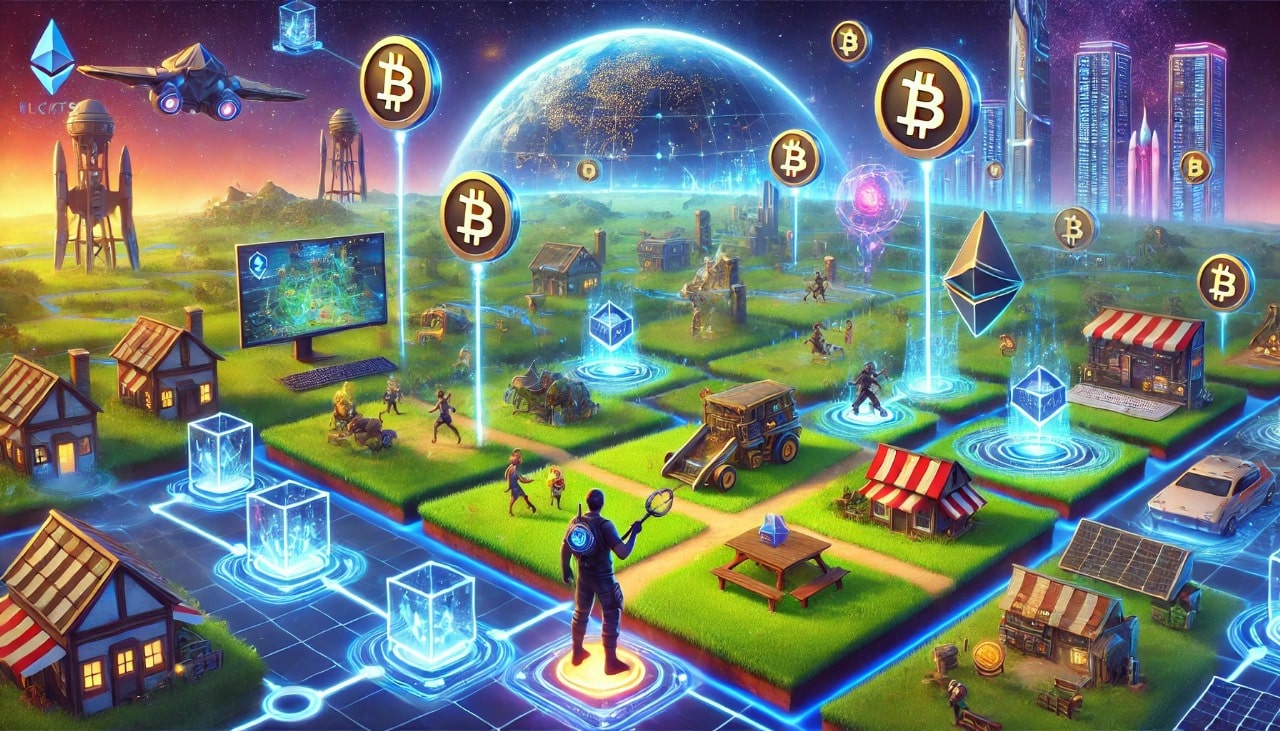
This can slow down business operations and lead to inefficiencies, especially in industries that rely on high transaction volumes or quick turnarounds. Enter blockchain’s smart contracts—a revolutionary solution that automates and simplifies the entire process.
Smart contracts are self-executing digital agreements that live on a blockchain. These contracts are written in code and contain predefined terms and conditions agreed upon by the involved parties. Once these conditions are met, the contract executes automatically without requiring manual enforcement or human intervention. This eliminates the need for middlemen, significantly reducing both costs and delays while enhancing trust and transparency.
To understand the impact of smart contracts, consider a common business scenario: hiring a freelancer. Traditionally, the process involves agreeing to terms, signing documents, completing work, sending invoices, and finally, waiting for payment. Delays in manual verification or payment approvals often cause frustration for both parties. With smart contracts, this process is seamless and immediate. For example, a smart contract can be programmed to release payment automatically once the freelancer uploads their work and it meets pre-defined requirements. The blockchain ensures that both the work submission and payment transaction are securely recorded, eliminating disputes over terms or timelines.
Platforms like Ethereum, the leading smart contract network, have already paved the way for such automation. Ethereum allows developers to create and deploy customised smart contracts tailored to various use cases. Meanwhile, projects like Chainlink enhance smart contract functionality by connecting real-world data to blockchain networks through decentralised oracles. This ensures that smart contracts can respond to external events, such as verifying the delivery of goods, confirming weather conditions for insurance claims, or monitoring stock prices for financial agreements.
The benefits of smart contracts extend far beyond freelancers and small businesses. Industries such as supply chain management, real estate, insurance, and healthcare are already leveraging this technology to improve efficiency. For instance, in supply chain management, smart contracts can automatically trigger payments when goods are delivered to specific checkpoints, ensuring transparency and reducing the risk of fraud. In real estate, they simplify property transfers by automating title verification, escrow processes, and payment settlements, saving time and cutting legal costs.
By automating routine business processes, smart contracts allow companies to focus on innovation, growth, and value creation. The immutability of blockchain ensures that these contracts are tamper-proof and transparent, fostering trust among stakeholders. As more businesses adopt blockchain technology, smart contracts are set to become a cornerstone of modern digital economies, streamlining operations, reducing costs, and transforming how agreements are enforced.
8. Carbon Credits: Fighting Climate Change
Climate change remains one of the most pressing challenges of our time, with businesses and governments under growing pressure to reduce their carbon emissions. To meet environmental targets, many organisations participate in carbon credit programs, which allow them to offset their emissions by investing in green projects such as reforestation, renewable energy, and clean technology.
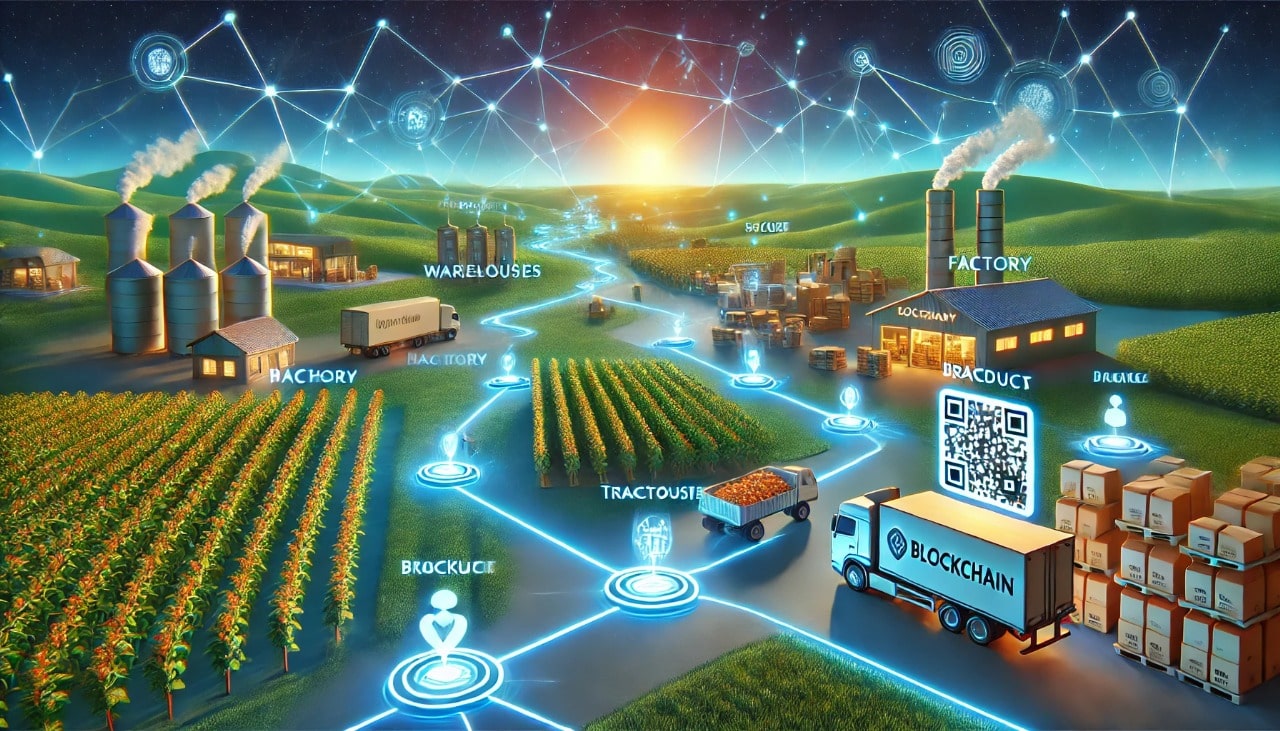
However, traditional systems for managing carbon credits often suffer from inefficiencies, lack of transparency, and fraud. Blockchain technology offers a solution by providing a transparent, secure, and verifiable system for tracking and trading carbon credits.
Carbon credits represent a measurable reduction in greenhouse gas emissions and are issued to organisations that reduce or offset emissions through sustainable initiatives. By tokenising carbon credits on a blockchain, each credit can be represented as a digital asset with a unique record on a decentralised ledger.
This ensures that every carbon credit is traceable, tamper-proof, and verifiable, preventing issues such as double-counting or fraudulent claims. Blockchain creates a secure system where businesses, regulators, and environmental stakeholders can trust the data and ensure accountability.
For businesses, blockchain-based carbon credit systems simplify compliance with environmental regulations. Instead of relying on complex paper trails or centralised databases, blockchain provides an immutable record of carbon credits issued, traded, or retired. This level of transparency enables companies to verify their green initiatives, providing stakeholders with proof of their commitment to sustainability. It also builds trust among consumers and investors, who increasingly prioritise environmentally responsible organisations.
Platforms like CarbonX are already demonstrating the potential of blockchain in carbon credit trading. CarbonX tokenises carbon credits, allowing businesses to trade them on a decentralised platform. Companies that reduce their emissions earn blockchain-verified credits, which can be sold to organisations seeking to offset their carbon footprints. This creates an open and efficient carbon marketplace where transactions are transparent, secure, and easily auditable.
For example, a renewable energy company that invests in wind or solar power projects can earn carbon credits for reducing emissions. These credits are recorded on the blockchain and sold to other companies aiming to meet their environmental targets. Buyers of these credits can verify their authenticity in real-time, ensuring the credits represent genuine reductions in emissions. By facilitating trustworthy carbon trading, blockchain incentivises businesses to adopt sustainable practices and invest in clean technologies.
Beyond businesses, blockchain-based carbon credit systems can play a vital role in achieving global climate goals. Governments can use blockchain to monitor carbon credit issuance and ensure compliance with international agreements like the Paris Climate Accord. By providing an accurate and immutable record of emissions reductions, blockchain enhances accountability and helps countries track their progress toward net-zero emissions.
Blockchain is transforming how carbon credits are tracked and traded, offering a transparent, secure, and efficient system for reducing emissions. Platforms like CarbonX are leading the way, enabling businesses to verify their green initiatives and participate in a reliable carbon marketplace. By incentivising sustainability and improving trust, blockchain helps drive meaningful action against climate change, paving the way for a greener, more sustainable future.
9. NFTs in the Creative Industry: Protecting Ownership
The creative industry—comprising artists, musicians, writers, and content creators—has long faced challenges around ownership, authenticity, and fair compensation. In traditional systems, proving ownership of a creative work can be difficult, leaving artists vulnerable to theft, plagiarism, and exploitation.
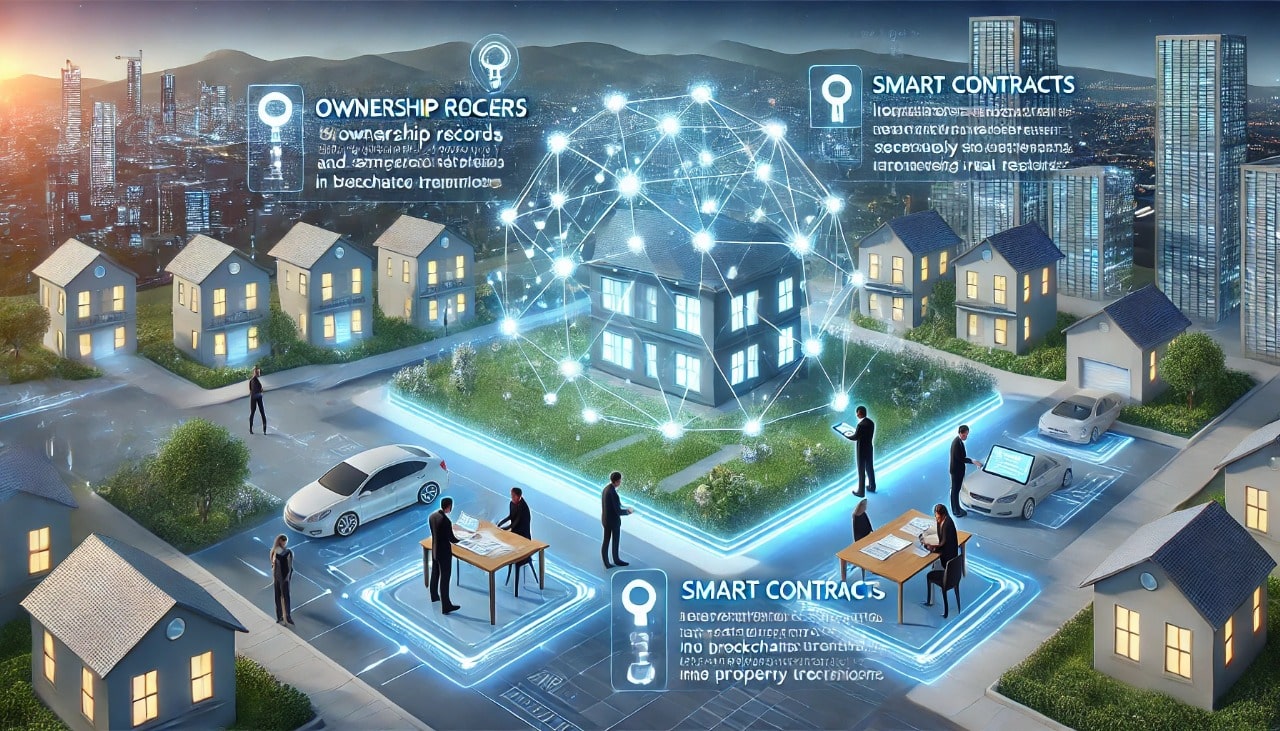
Moreover, intermediaries, such as galleries, record labels, or streaming platforms, often take significant cuts of artists’ earnings, leaving creators with limited control over their work and its value. Blockchain technology is changing this landscape through the use of Non-Fungible Tokens (NFTs), which empower creators to protect ownership, verify authenticity, and monetise their work directly.
NFTs are unique digital assets stored on a blockchain that represent ownership of a particular piece of content, such as art, music, videos, or written works. Unlike traditional digital files, which can be endlessly copied, an NFT provides a verifiable proof of ownership and uniqueness. Each NFT is assigned a unique identifier on the blockchain, making it tamper-proof and impossible to duplicate. This ensures that creators can prove they are the original owners of their work while also allowing buyers to verify authenticity before making a purchase.
Platforms like OpenSea, Rarible, and SuperRare have emerged as key players in the NFT ecosystem, enabling artists and creators to mint, showcase, and sell their work securely. By minting a piece of digital content as an NFT, creators gain full control over their intellectual property, deciding how their work is sold and shared. Once an NFT is sold, ownership is transferred seamlessly on the blockchain, providing a transparent and traceable record of transactions.
Consider a digital artist creating a unique artwork. Traditionally, sharing digital art online risks it being copied or stolen without credit. By minting the artwork as an NFT, the artist secures its originality on the blockchain. Collectors who purchase the NFT gain ownership rights to the original piece, while the artist retains proof of authorship. Additionally, smart contracts—a feature of blockchain—allow creators to earn royalties automatically every time their NFT is resold, ensuring they benefit from the long-term value of their work.
The music industry also benefits from NFTs. Musicians can mint limited-edition tracks, albums, or concert tickets as NFTs, offering exclusive content to fans while bypassing traditional distribution channels. This direct-to-fan model not only generates more revenue for musicians but also strengthens their relationships with audiences. For example, artists like Kings of Leon and Grimes have successfully released music and digital art as NFTs, proving the technology’s potential for monetising creativity.
NFTs also hold value for writers, filmmakers, and game developers. Writers can publish exclusive chapters or books as NFTs, while filmmakers can tokenise films or scripts to secure funding and distribution. In the gaming industry, developers can create unique in-game assets as NFTs, allowing players to own, trade, and monetise digital items.
By eliminating intermediaries, NFTs empower creators to connect directly with buyers, retain control of their intellectual property, and benefit financially from their work. The transparency and security of blockchain ensure that ownership is verifiable and tamper-proof, reducing the risks of theft or forgery.
NFTs are revolutionising the creative industry by protecting ownership, ensuring authenticity, and enabling new revenue streams for artists, musicians, and creators. Platforms like OpenSea and Rarible are making this technology accessible, offering creators a way to thrive in the digital age. As NFTs continue to gain traction, they are paving the way for a fairer and more innovative creative economy.
10. Gaming: Ownership of Digital Assets
The gaming industry has evolved rapidly over the last decade, becoming a multi-billion-dollar market that attracts millions of players worldwide. However, traditional gaming models limit the ownership and value of in-game assets such as weapons, characters, skins, and virtual land. In conventional games, players spend time and money to acquire these digital items, but they remain locked within the game’s ecosystem, controlled by the game developers.
Players have no real ownership and cannot transfer, sell, or trade these assets outside the platform. This lack of ownership has long been a point of frustration for gamers who invest significant resources into their virtual achievements. Blockchain technology is revolutionising the gaming world by enabling true ownership of in-game assets. Blockchain-based games use Non-Fungible Tokens (NFTs) to represent unique digital items, allowing players to buy, sell, trade, and even transfer assets across different games.
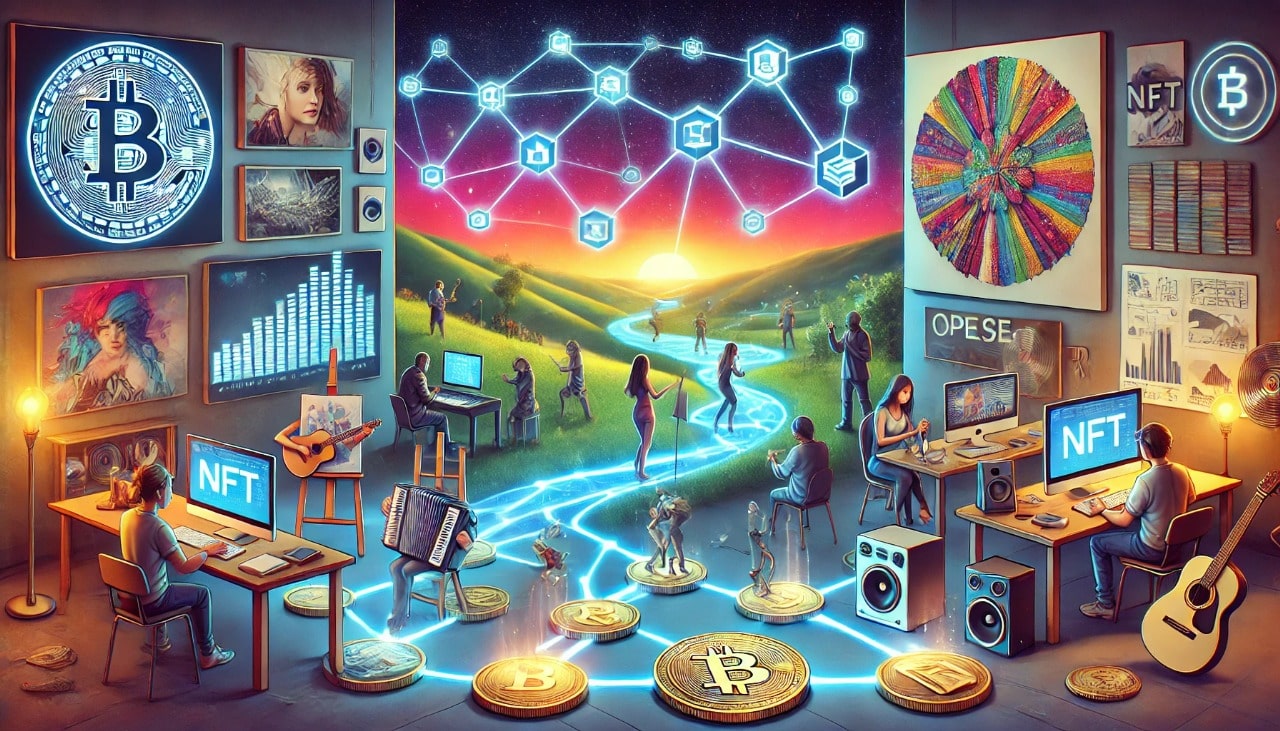
Each NFT-backed asset is stored on a decentralised blockchain technology, ensuring transparency, security, and immutability. Players no longer need to worry about losing their items due to game shutdowns or changes in developer policies—ownership of these digital assets is verifiable and permanent.
For example, games like Axie Infinity and Decentraland are leading the way in blockchain gaming. In Axie Infinity, players collect and breed digital creatures called Axies, which are NFTs. These Axies can be used to battle other players, complete quests, and earn rewards. Players can also sell or trade Axies in online marketplaces, turning their in-game activities into real-world income.
The play-to-earn model of Axie Infinity has been particularly impactful in countries like the Philippines, where players have earned significant revenue through their participation in the game.
In Decentraland, players can purchase virtual land, create experiences, and monetise their digital assets. The land and items within Decentraland are represented as NFTs, giving players full ownership and control over their virtual property. For instance, players can build virtual homes, businesses, or entire entertainment venues on their land and earn revenue by hosting events or selling services. The ability to own, trade, and monetise digital assets gives players real economic opportunities within the gaming world.
Blockchain gaming also introduces the concept of interoperability, where players can transfer assets between games that support blockchain-based systems. For instance, a weapon or character earned in one game could be carried over to another game, creating a more immersive and interconnected gaming experience. This is a major shift from traditional games, where assets are locked into isolated ecosystems.
The decentralised nature of blockchain gaming benefits not only players but also developers. By leveraging blockchain, developers can create decentralised marketplaces where players can trade directly with each other. This fosters a player-driven economy, reducing reliance on centralised platforms and intermediaries.
Furthermore, blockchain technology enhances trust and transparency in gaming. Since all transactions and asset ownership are recorded on the blockchain, players can verify the rarity, authenticity, and provenance of their digital items. This prevents fraud, such as the duplication of in-game assets, and ensures that digital scarcity is maintained.
Blockchain gaming is transforming the way players interact with digital assets by giving them true ownership, control, and economic opportunities. Games like Axie Infinity and Decentraland showcase the potential of blockchain to create immersive, player-driven economies where in-game achievements translate into real-world value. As blockchain technology continues to evolve, it promises to unlock even greater possibilities for gamers, developers, and the future of virtual worlds.
The Concluding Remarks
Blockchain technology is no longer just about cryptocurrency. By 2024, it is revolutionising industries, solving long-standing problems, and making processes faster, more secure, and more transparent. From tracking products and securing medical records to enabling fraud-proof elections and simplifying real estate, blockchain’s real-world impact is undeniable.
As blockchain adoption grows, its role in our everyday lives will continue to expand. Whether you’re a business owner, voter, or consumer, understanding blockchain puts you ahead of the curve. The future is decentralised, transparent, and unstoppable—and blockchain is at the heart of it all.
Stay tuned to The BIT Journal and keep an eye on Crypto’s updates and to educate yourself. Follow us on Twitter and LinkedIn, and join our Telegram channel to be instantly informed about breaking news!

